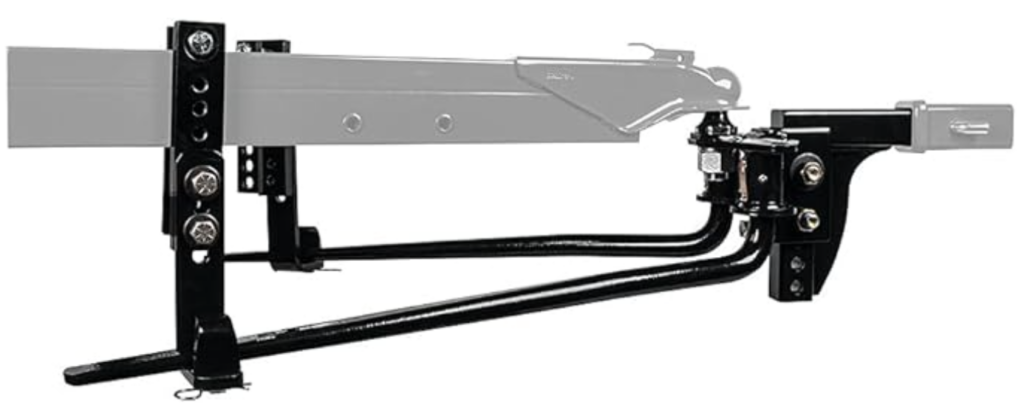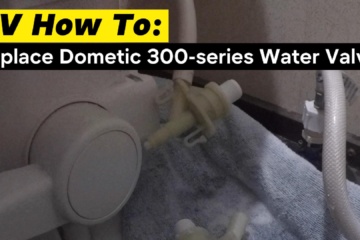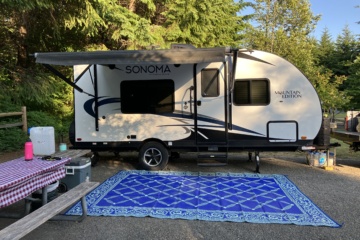Welcome to part 4 of me documenting what we are learning about owning a travel trailer. We are extremely new to this so I’m sure some of the things I mention will be wrong. Also, some of what I’m going to talk about is specific to our situation. So what works for our trailer may not make sense for yours. But my main goal is to give general advice that can help other first timers regardless of what type of travel trailer is in your future.
Background
In part 3 of this series, I discussed how we found storage for Shortstack and shared our first trip. One of the most complicated, but important, things about owning a travel trailer is learning about towing. I’ve mentioned some parts of that process in previous parts of this series, but it deserves its own post.
Before we bought Shortstack I had only towed something twice. The first time was a 12 foot Uhaul trailer when we moved to Washington 7 years ago. The other was 2 years ago when we rented an RV. On that trip I learned a little about towing speeds and how nerve-wracking it is to tow a travel trailer through a large city during Friday rush hour, but not much else.
Once our offer on Shortstack had been accepted I started researching towing basics. A lot of what I needed to learn depended on what trailer we chose. Now that we had a specific trailer, I was able to research based on those details.
Hitch
The most basic thing you need is a hitch with the right size ball for your trailer. You also have to make sure the ball has a gross load rating, or weight capacity, greater than the weight of your trailer when loaded. For travel trailers there are 2 primary sizes of hitch balls: 2″ and 2 5/16″. Unless you have a very small, light trailer chances are you’ll need the 2 5/16″ ball.
Thankfully I already had a hitch with a 2 5/16″ ball that was capable of safely towing Shortstack. That was enough for me to be able to tow the trailer from the bank where the purchase was finalized to the repair shop where we got the roof resealed. But that 20 mile trip left me feeling uneasy about our tow setup. It felt like it was swaying more than it should and I had to go extra slow.
Weight Distribution
While it was in the shop I used that time to do more research about towing safety. I also talked to a friend who also has a travel trailer. The most frequent piece of advice I saw was to get a weight distribution hitch (WDH). It’s a special hitch that, as the name implies, helps distribute the weight of the trailer more evenly so that the trailer and tow vehicle are more level. Doing that can naturally help reduce some sway, but most weight distribution hitches also have the option to add a sway control module to reduce sway even more.

If you choose to install a weight distribution hitch yourself you will find that you need at least one additional tool, a torque wrench. If you aren’t familiar, that’s a special wrench that lets you choose a value measured in foot-pounds and lets you know when you’ve tightened a nut to that value. Once you’ve selected a hitch, check the installation directions and look for the steps that involve tightening bolts. Find the installation step that requires the highest foot-pounds. Be sure when you buy a torque wrench that the one you buy is capable of that setting.
Get Hitched
Now that you’ve got a weight distribution hitch installed it’s time to get hitched to your tow vehicle. The first step is putting the hitch itself into the receiver of your vehicle. With a WDH the actual hitch is large enough you probably won’t want to drive around with it always attached. You’ll need a pin to secure the hitch to your tow vehicle and depending on where you’ll be towing you may want to use a locking pin.
Next, raise the tongue of your trailer higher than the ball of the hitch so you can back under it. The first few times you might want to get close to the hitch and stop to make sure the coupler is high enough that you won’t hit it. Don’t worry, it won’t take long for you to get a feel for how high it should be without having to doublecheck.
Once the coupler is centered over the ball start lowering the trailer onto it, but be sure the latch is in the unlocked position. Once the trailer is lowered onto the ball you should be able to easily slide the latch down. You can use a coupler pin to secure it or get a locking coupler pin. Next, attach the safety chains from the trailer to the holes on either side of your tow vehicle’s receiver. There will also be a cable connected to the breakaway switch which activates the emergency brakes in case your trailer comes unhitched while towing. Often times that cable will be clipped onto one of the safety chains since both need to be attached to the tow vehicle.
The next step will vary depending on the type of WDH you have. Ours uses friction by attaching two spring bars to the hitch and locking them into place on a bracket bolted to the trailer frame. For this type of setup you actually raise up the trailer as if you were unhitching which also raises the tow vehicle. That will make it easier to install the spring bars.
This is another step where you’ll quickly get a feel for how much you need to raise it before you can slide the spring bars into the brackets and lock them into place. Other WDH options use spring bars supported by chains. If that’s what you have, refer to your manual for the proper steps on connecting everything.
The last step is to connect the wiring harness to your tow vehicle. This provides power to your trailer for things like the taillights, backup cameras, and brakes. What it powers depends on your specific trailer and what options it has. In some cases it might also charge your trailer’s battery as you tow.
Towing
Now that you’re hitched up it’s time to get on the road! Once you’re driving you have more things to think about. Some are common sense like needing more time when braking and taking wider turns. Others can vary depending on your circumstance, like how fast to drive.
Before our first trip I was wondering how to determine a safe towing speed. Many factors go into how fast you can safely drive while towing. The size of your rig, your tow vehicle, tires, the road, traffic, topography, weather conditions, and your own comfort level. Keep Your Daydream has a great video about this topic.
On our first couple of trips I kept my max speed around 50-55 mph. If there was any wind or a large truck passing I would drop down to 45-50 mph. But once I got the WDH set up the difference was night and day. I felt more comfortable and in good weather started towing between 60 and 65 mph. After two more trips I felt like there was still a little more sway than I’d like.
So I ordered a sway control module that was made for our specific WDH. It’s a friction device with one end attached to the trailer tongue and the other to a smaller ball on the hitch. It’s simple to put on and take off, but it made such a huge difference. The first trip with sway control installed was a completely different experience. Even with a little wind the trailer was rock solid. I highly recommend checking to see if the WDH you choose has the option to add sway control.
Backing Up
Ok let’s talk about the topic that probably makes people the most anxious when they first start towing, backing up. If you rarely (or never) tow anything, it can be the most challenging part of owning a travel trailer. You might be really good at backing up your vehicle into a driveway or parking spot, but backing a trailer is an entirely different animal.
Before we bought the trailer I did something I recommend to anyone who has little or no towing experience. I rented a uhaul trailer and took it to an empty parking lot where I could practice backing into parking spaces. I’m sure I looked ridiculous, but it definitely helped. It also gave me a chance to try out all of the features in our max tow package including the backup assist where you let go of the wheel and use a knob to steer.
The best piece of advice I got was from someone at the repair shop where we got the roof resealed. I mentioned I was not great at backing the trailer and they said the best thing to do is grab your steering wheel at the bottom, then turn whichever direction you need the trailer to go. It’s a simple thing, but has made the biggest difference when backing into campsites and our storage spot.
We do have a rear camera on our trailer, but I’ve found it’s mostly useful for knowing how much farther I can back up. It’s not a huge help with lining up the trailer with the spot I’m trying to back into. Especially at a campsite where you’re likely to be more concerned with lining up with the electric, water, and sewer hookups that the rear camera can’t see.
Final Tidbits
I’ve got a few final tips and reminders that don’t need their own full category:
- Mirrors – Extended mirrors are great for seeing how close another vehicle is when changing lanes. It also lets me know if there’s someone right behind the trailer which I can’t see in the normal mirror. Our truck doesn’t have the fancy built-in, extending mirrors so I just got a cheap pair from Amazon that strap on and they work great.
- Braking – Always leave extra space between you and the vehicle in front of you. It takes longer than you think to come to a stop with the extra weight behind you.
- Turning – Give yourself extra space when making a turn, especially when turning right. Sometimes that means waiting until another lane is clear and partially using 2 lanes as you turn.
- Stopping – Stopping for a restroom break, gas, or food on a roadtrip isn’t a big deal. But when you’re towing a travel trailer you have to plan ahead a little more. Just knowing the next exit has the amenity you’re looking for isn’t enough. Is there a tunnel just off the exit and will you fit or rip your AC off the roof? Is there a parking lot with enough space to both maneuver and park your vehicle + travel trailer?
Conclusion
I could write a lot more about towing, but hopefully these basics are enough to get you started and reduce any anxiety you might have. The main thing is to listen to your gut about what you’re comfortable doing. If your experience or the conditions make you feel unsafe towing faster than 50 mph, go slower. The safety of you and your family is far more important than some jerk that honks because you aren’t going as fast as he would like. Stay in your comfort zone, remember it’s not a race, and arrive alive. Happy towing!



0 Comments